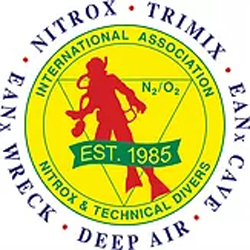
Want to learn technical dive skills in paradise?
Akumal Dive Center is pleased to announce our new technical certification courses in partnership with the International Association of Nitrox and Technical Divers or IANTD.
Since 1985 IANTD has offered cutting edge dive course and they continue to be the leader in technical diving instruction. While we offer PADI certification for recreational diving, we use IANTD for advanced technical skill development and certification.
Mexico is a popular destination for technical diving because of it’s caves, shipwrecks, walls and surrounding and diverse open water environments. The following is a list and brief description of these advanced technical courses.
Technical Courses
IANTD Technical Diver Programs offer divers the opportunity to train beyond the traditional limits of recreational diving.
Technical diving is often associated with going to deeper depths than recreational diving. It can involve cave diving and extending bottom time. Nitrox can be associated with beginner level technical diving while trimix requires a bit more advanced instruction.
Nitrox Course
One of the benefits of nitrox diving is that you get longer bottom times with nitrox. Due to the lower nitrogen concentration and higher oxygen, divers can prolong their dive time by absorbing a smaller amount of nitrogen. Less nitrogen means the dangers of decompression are reduced and a diver can stay at maximum depth for longer amounts of time.
Advanced Nitrox Course
While recreational diving courses can include Nitrox, taking an Advanced Nitrox course is the first step in serious technical diving. The objective of Advanced Nitrox Diver Course is to train divers in the benefits, hazards and proper procedures for utilizing EAN-21.
The Advanced Nitrox Diver Course considers physical phenomena of dives with mixtures enriched with oxygen, the pressure concept, physiological aspects of the influence of gases that are part of a breathing mixture on a human body. Special attention is drawn to the technology of dive planning, correct calculation of the optimal mixture, calculation of dive limits on oxygen and nitrogen with the use of tables and computer programs. Equipment preparation for dives with alternative mixtures, procedures of gas mixture analysis is presented too.
Deep Dive Course
The IANTD Deep Diver Program trains divers in skills, performance, theory and planning of deep dives.
Technical Exploration
This course allows the diver to explore the basic concepts of technical diving.
Trimix Course
Trimix is a breathing gas consisting of oxygen, helium and nitrogen and is often used in deep commercial diving, during the deep phase of dives. It is carried out using technical diving techniques, and in advanced recreational diving.
Trimix diving involves a combination of three gases: oxygen, nitrogen and helium. Depending on blending methods and the individual gases of mixes, trimix can include helitrox or heliair. Helium is added to the diver’s breathing gas for a few reasons depending on the planned dive. For depths from 197 to 213 feet (60 to 65 m), trimix diving can reduce nitrogen narcosis. Narcosis affects every diver below 100 feet (30 m). In warm, tropical waters, many may not experience nitrogen narcosis, but in colder, darker waters, it can be more common.
Normoxic
Normoxic Trimix is used to reduce the END diving within air limits. It has 21%oxygen, but some of the nitrogen is replaced with helium to reduce narcosis at depth.
Normoxic can be used to 190-220 ft, where the partial pressure of O2 in air would not necessarily be a serious problem, but the narcotic effect of the nitrogen is seen to be too great.
Hypoxic
Hypoxic Trimix mixes (less than 21% O2) used for deeper diving. 16% oxygen is roughly equivalent to the percentage in your exhaled breath, so you can theoretically breathe this all the way to the surface and or decompress on it in the event you lost your deco gasses.
Rebreather Programs
IANTD Rebreather Diver training programs offer divers the opportunity to train in many different types of rebreathers. IANTD offers various rebreather programs in SCR and CCR rebreathers both in open water and in the overhead environment.
Side Mount Course
The diver will learn the advanced techniques, equipment and mindset required for Technical Sidemount diving. This course will enable divers to proficiently assemble and use Technical Sidemount equipment configuration. We teach divers the proper techniques to safely conduct decompression dives that warrant the use of Sidemount equipment configuration.
Cave Course
Divers learn skills about the limits of light penetration and to insure that divers are aware of self-responsibility and are capable of risk management in overhead environments.
DPV Course
A diver propulsion vehicle, also known as an underwater propulsion vehicle or underwater scooter, is an item of diving equipment used by scuba divers to increase range underwater.
Be sure to also check out our online PADI courses so you can spend less time studying and more time diving while you are here.
Add Comment